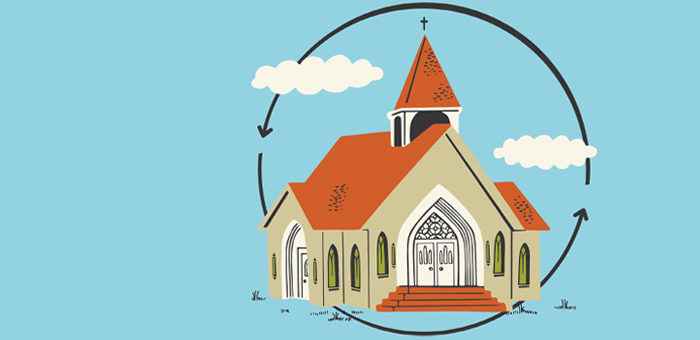This article offers fresh solutions to two “elephant in the room” issues: rising seminary costs and pastoral debt. My knowledge of these topics comes from engagement with multiple seminaries since 2013 as part of an initiative funded by the Lilly Endowment Inc. called Economic Concerns Facing Future Ministers. Below I summarize these challenges, highlight deeper issues that surface, and share how innovative steps taken by a few schools are making seminary affordable and leading current and future pastors to financial freedom.
Rising Seminary Costs
Many blame the problem of pastoral debt on the rising cost of tuition at seminaries. Others pin the problem on the government for making loans too easy for students to access. The loans can be (and in many cases are) used not just for school but for living expenses, such as transportation, rent and a range of consumer purchases. Early research showed that student debt did not correlate with the cost of education. For example, whether students received scholarships or not, many were borrowing large sums of money just because they could. So, the solution was not simply to increase financial aid!
Two deeper issues also emerged from this research. First, seminaries must find a way to deliver affordable theological education in a manner that does not require students to incur debt. Second, many schools provide little or no biblical instruction on the handling of money.
Greg Henson, president of Sioux Falls Seminary, admits, “We as seminaries were partly culpable. We had not changed our programs in decades, but we kept raising tuition rates annually. It almost put us out of business. Students could no longer afford to attend. Only when we did the hard work of changing from a tuition-based system to a subscription program and made biblical teachings on money central to the curriculum did the tide turn.”
Four years ago, Sioux Falls Seminary had 15 students in its Kairos Project, a contextually integrated and cohort-based seminary model. Today, they have 360, and student debt has dropped by 90 percent. Only 3 percent of students have student loans, while the national average is 49 percent. This model has lowered the cost of theological education to $300 per month. Students can afford to go to seminary and learn about stewardship in the process.
Pastoral Debt
When researchers looked at pastoral debt, many wondered why today’s students were not pulling themselves up by their proverbial bootstraps and getting through school debt-free like the generations of pastors before them. (Notice the toxic underlying bias toward shame and blame.)
The data revealed that today’s students face different social and financial dynamics. About half come from broken homes. Many have little or no support from family to attend seminary. Most say that their parents never taught them about handling money.
In scrutinizing this complex situation, two concerns loom large. First, seminaries need to create safe, grace-filled settings in which they provide biblical instruction and financial counseling to help current and future pastors get out of debt. Second, they must also make structural changes to lower student debt.
Some schools are taking strides in both areas, such as Northern Seminary. They piloted a Faith and Finances course with biblical teaching and financial counseling in 2016. Students said the content and financial counseling was so valuable that they thought every student needed to be exposed to it. So, they got creative. Since then, they have annually offered a free “no shame, no blame” Faith and Finances seminar for current and former students (and their spouses if married).
Bill Shiell, president of Northern Seminary reports, “Hosting the annual Faith and Finances seminar was part of a larger strategy to lower pastoral debt and reverse years of shame and blame. In the last three years we made systemic changes to help all students. We reduced the cost of the M.Div. and created a zero interest loan program to discourage borrowing from the federal student loan program. We also increased direct financial aid to women and persons of color to balance long-standing inequities in the financial aid and scholarship system. Today, 59 percent of scholarship recipients are persons of color and 53 percent are women.”
These efforts are making a measurable difference. Average graduating student debt has fallen to $4,400.
New Garments and New Wineskins
Problems like rising seminary costs and excessive pastoral debt are complicated. Solving them requires research and hard work. As Jesus put it in Luke 6:36-39, we cannot sew new patches on old garments or put new wine in old wineskins. We need new garments and new wineskins. Schools that are innovating and instituting systemic changes are making seminary affordable and setting current and future pastors free from debt.
This article originally appeared in Evangelicals magazine.
Gary Hoag, known as the Generosity Monk, is committed to serving the Church by providing spiritual and strategic guidance to help people understand and practice biblical generosity.He is a visiting professor for several seminaries and was previously vice president of advancement for Denver Seminary. He received a B.A. in accounting from Cedarville University, an M.Div. from Biola University, and a Ph.D. from Trinity College at Bristol University.




 View All Articles
View All Articles 


























